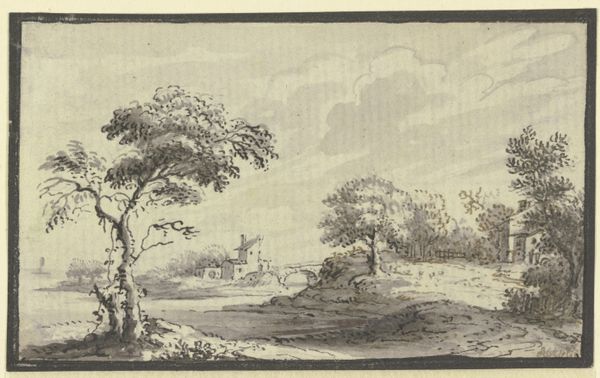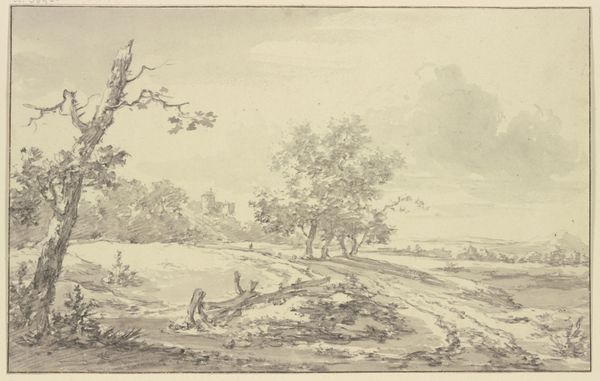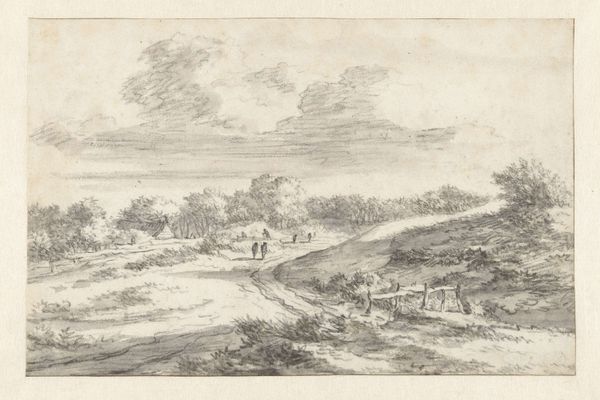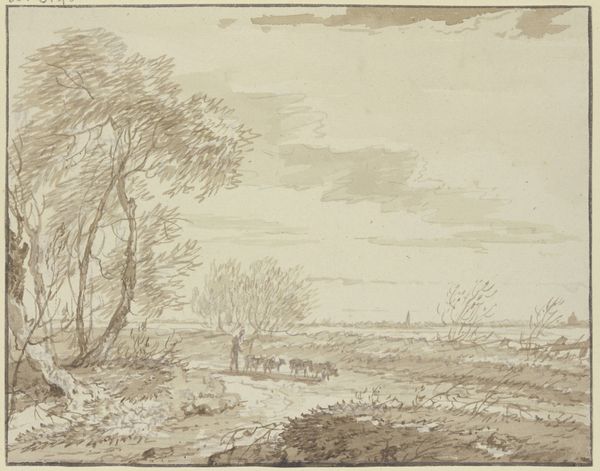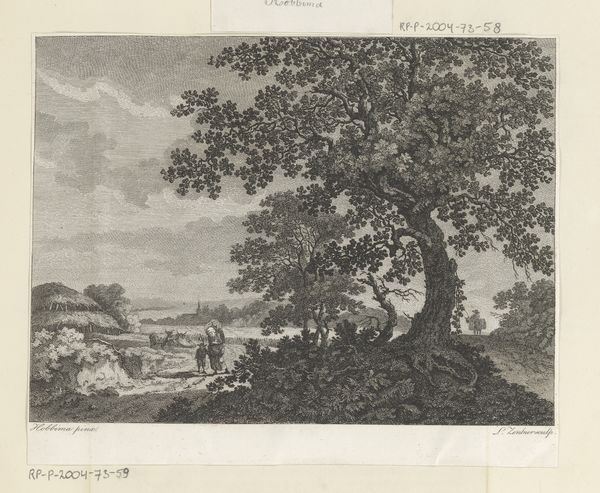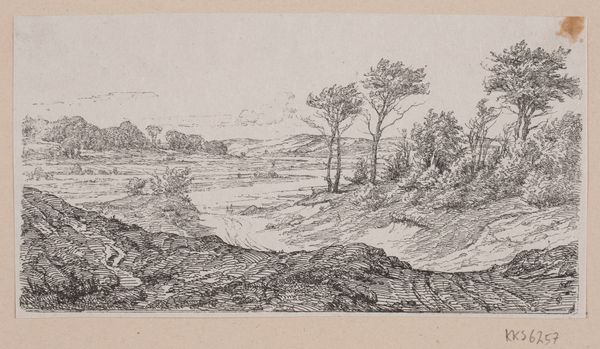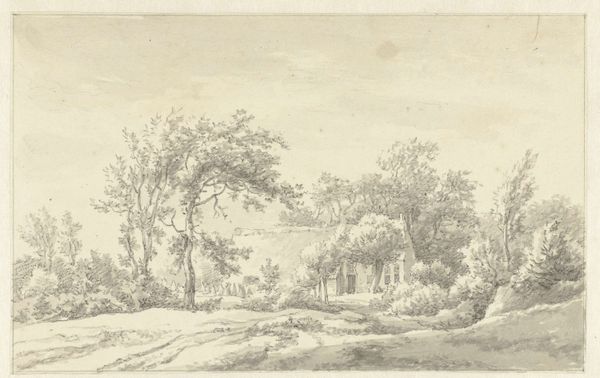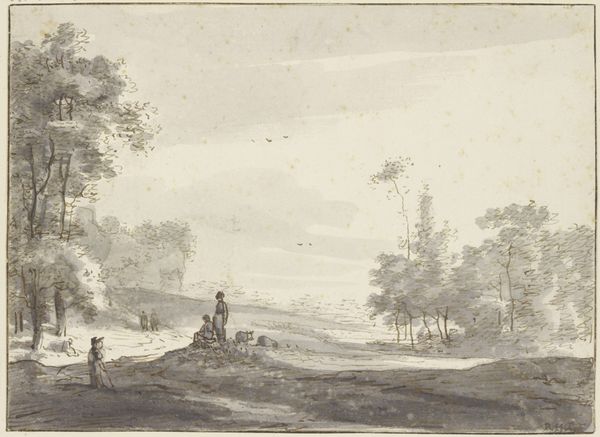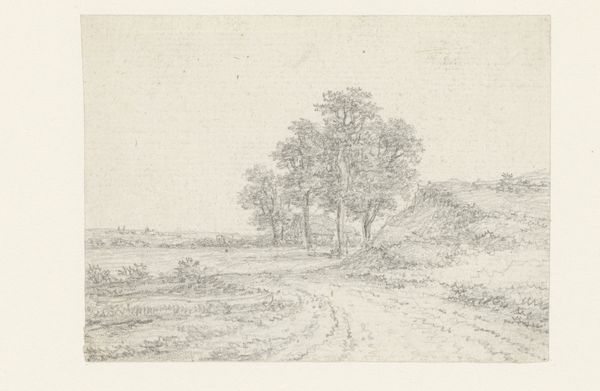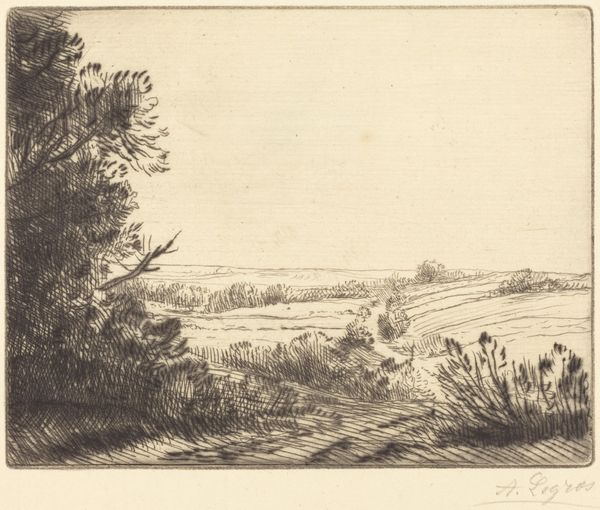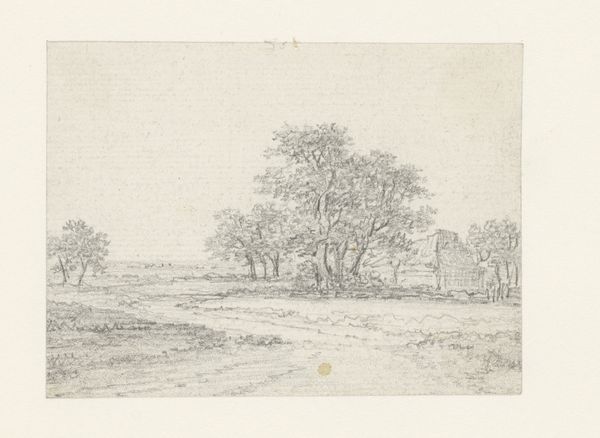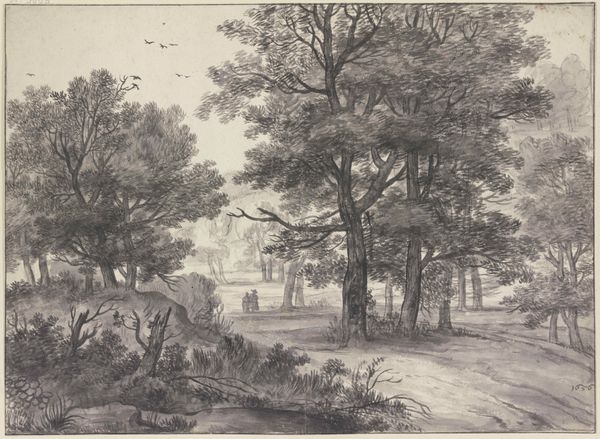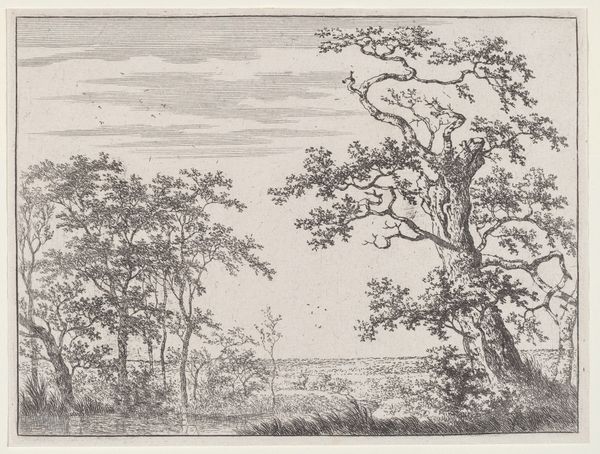
Kapelle und ein Bauernhaus unter Bäumen, dabei einiges Vieh, rechts am Rande zwei Hirten
0:00
0:00
drawing, ink, chalk, graphite
#
drawing
#
baroque
#
dutch-golden-age
#
landscape
#
ink
#
chalk
#
graphite
Copyright: Public Domain
Curator: Jan Wijnants crafted this pastoral scene using chalk, graphite, and ink. The artwork, presently housed in the Städel Museum, goes by the title "Kapelle und ein Bauernhaus unter Bäumen, dabei einiges Vieh, rechts am Rande zwei Hirten." Editor: It feels like looking at a fading memory. The tones are subdued, almost monochromatic. A lone chapel on the left, contrasted by the larger farmhouse nestled amongst the trees – there’s a simplicity here, but also a strong sense of place. Curator: Consider Wijnants' approach. The texture is palpable, rendered with visible strokes of graphite and ink that delineate the material world around the village structures. Think of the physical act of surveying this landscape, selecting his materials, rendering this world under particular economic conditions of patronage... Editor: Right. This wasn’t a scene of neutrality. Even landscape is coded, carrying hierarchies within. The inclusion of the chapel alongside the farmhouse signals a community rooted in both labor and spiritual practice. Where does the control lie for the landscape – with the grazing livestock or God? Curator: Good point, the choice and handling of materials offer valuable insight. Chalk for subtle gradations, ink for delineating details - Wijnants seems to draw a hierarchy. Editor: These pastoral images also offered solace amidst upheaval. Seventeenth-century Dutch society was changing – we can question what these tranquil village scenes affirmed for their buyers and contemporary audience. Curator: Precisely! The method is so important. His technical skill translated nature itself into a commodity, to be traded and displayed, reinforcing human dominance of natural world, as material to build both home and art. Editor: There’s a quiet dignity in this sketch; this is something special and of its time. Considering issues such as human labour of livestock, the way that this period influenced art can provide great context for modern culture. Curator: Definitely. Understanding the socio-economic factors which birthed this landscape, combined with material understanding makes appreciating its cultural relevance so rewarding! Editor: Absolutely. A valuable lens into how art interprets the world we create – then, and now.
Comments
No comments
Be the first to comment and join the conversation on the ultimate creative platform.
